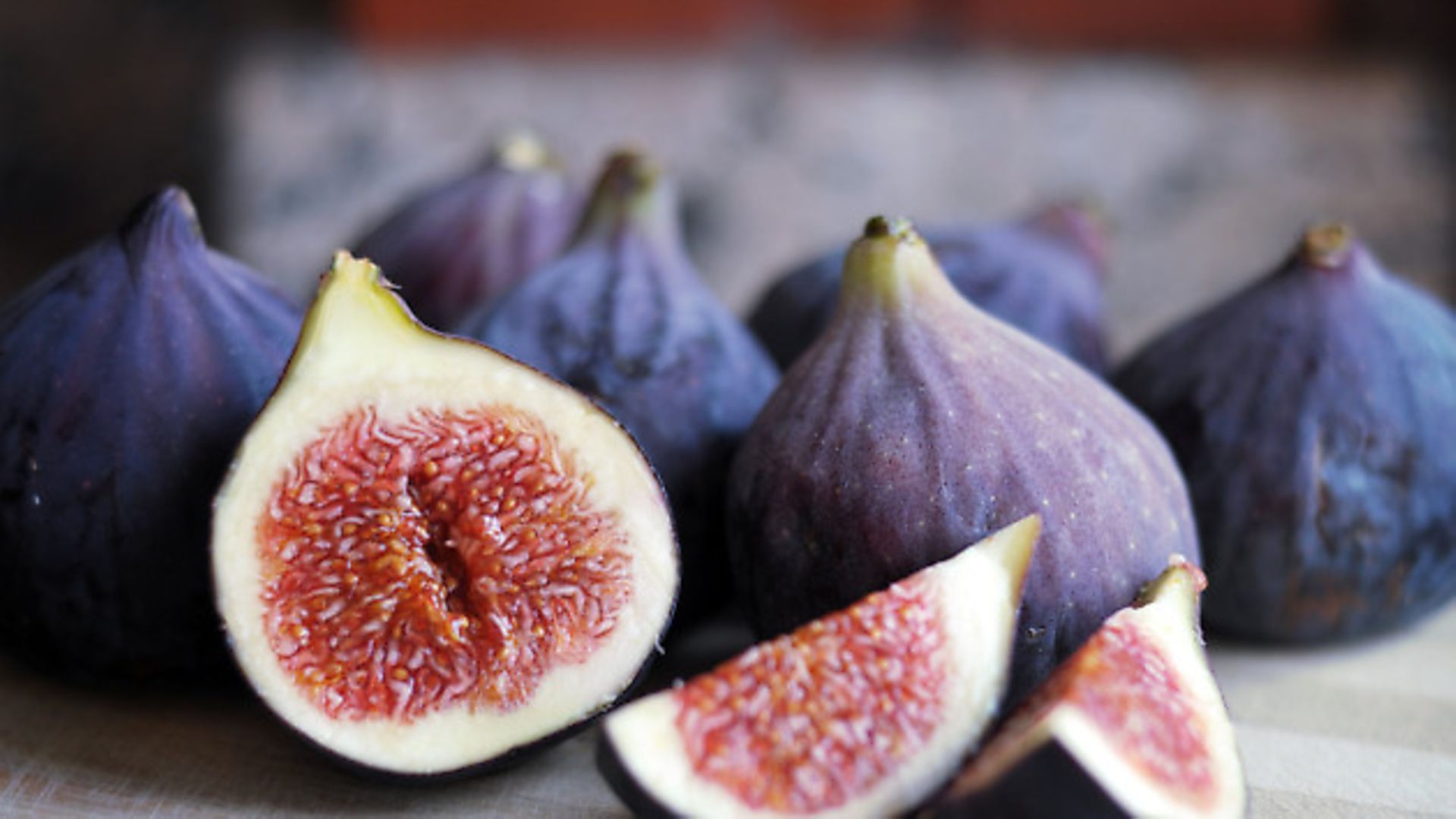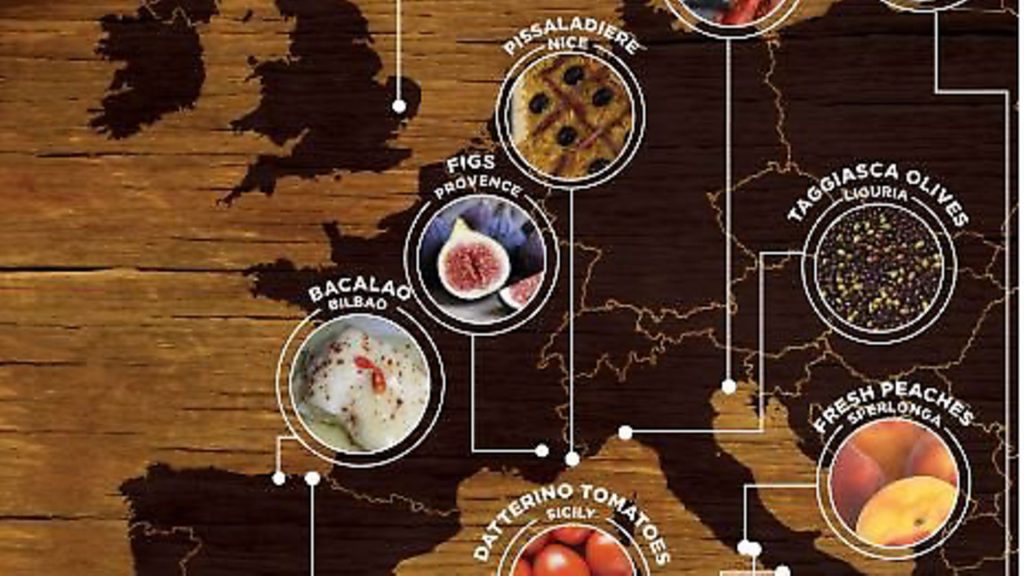
These top chefs shared how lesser known European dishes and ingredients have inspired their own work

A couple of years ago, I was standing in front of a little hole in the wall, edged by tiles and dust, in a crooked alleyway next to Florence’s vast cathedral. A beautiful tanned man was splattering my tripe with garlic and olive oil and parsley. He put the offal in a crusty roll. It smelled of dirty pig and pate.
I was on a little tour with a couple of other journalists, and it was when I took my first bite of the tripe bap that our lovely tour guide, whose name I rudely cannot recall, told us that recently she’d shown a ‘so lovely and enthusiastic’ Carrie Fisher around. Now, whenever I think of tripe, I think of Carrie Fisher – who, our tour guide explained, was every bit as charming and delightful as anyone who’s ever met her says she was. She had apparently fed her dog Gary ice cream from the same parlour that we enjoyed post-tripe.
That, to me, is what food is: memories. However obscure and trivial at the time, on reflection they seem cataclysmic in proportion. I’ve fond recollections of tripe in that Florence bap, as I do at last year’s Fete du Vin with St. John, where the same offal was cooked with mountains of carrots and potatoes and onions, and sat next to barbecued lemony quail and lashings of the restaurant’s own red wine. We were in a barn in a small French village in the Languedoc.
My first visit to France was aged about six or seven. I was with my dad, then a chef. We returned with a boot load of wine and cheese – and tins of cassoulet, which looked unappealing. Yet my dad had talked with such admiration and respect for them that I couldn’t say no. We had them for dinner on our return. Those tins unlock good secrets.
These insignificant things are our connections to Europe. Any time we exult San Marzano tomatoes, born on the shadow of Mount Vesuvius in southern Italy, or trumpet floury, porky dumplings from Krakow in Poland, they prod us and anyone within earshot to remember how fortunate we are to have such generous neighbours. Indeed, it’s these lesser-known foodstuffs, from pockets of European countries quite uncharted by comparison to the likes of Parisian bakeries and Roman pizzerias, which leave me hungry. Phil Howard, head chef at Elystan Street, is the same.
‘Perhaps more than anywhere else it is a small restaurant in the south of France that sparked my love of cooking,’ he said.
‘Nothing flash, nothing luxurious – it was all about a sense of place and time, and ingredients. It was watching a wiry-haired local roll sheets of pasta through his ageing pasta machine that inspired me. The simplicity of the process, the swiftness of the cooking and the sheer pleasure that the resulting dish never ceased to amaze me.
‘He also made a tuna tart, or tarte au thon as he called it. In essence a shortcrust shell filled with a tuna and tomato quiche style mix – topped with seeds. This too, eaten on the terrace of a hilltop village dining room, in the warm breeze of the south of France, instilled in me a love of cooking seasonal fare relevant to the area it is cooked in.
‘A late night trip into St Tropez was often on the cards after a dinner at La Farigoulette – and sauntering back to the car in the early hours was often punctuated with a pit stop at the opened window in the rear of a bakery where they would sell, for cash only, warm croissants fresh from the oven. As good as food can get.’
I’ve never had a tuna tart. But I will make it a project to make sure that I do. I have, though, tried one of Helene Darroze’s favourites. The head chef at the Connaught told me that garbanzos au chorizo (chickpeas with chorizo) tugs at her heart.
She said: ‘[It’s] what my grandmother’s sister used to cook. It is something special from the Basque country, her native country. It is very simple – a ragout of chickpeas with some roasted chorizo) but very tasty. I cook it very often for my girls – it always reminds me of her and my childhood.’
There’s no doubt that chorizo cooked in the Basque country would taste better than any procured here in the UK. Suffolk Salami, which I first tried at Aldeburgh, is a new-found pleasure, but a trip over to Spain and a backpack full on your return is a notch up on the scale of cured reverie. The boar pie I sampled in the Basque country, aged about 13, I fear will never again be replicated. But it inspired so many, many pies in the years that followed.
It’s these single, local ingredients that are best captured and taken back to our native kitchens, where dishes benefit and are elevated, thanks to European intervention. Helene said some of her favourites are ‘pimiento del piquillo from Lodossa, taggiasca olives from Liguria, txistorra (sausage) from San Sebastian, and bacalao from Bilbao’. Imitations will not do.
Bocca di Lupo’s Jacob Kenedy also has his go-to nourishments. He reeled off: ‘Buying fresh fish in the markets of Rialto (Venice), Catania (Sicily) and Gaeta. Eating figs off a fallen tree in Provence. Eating Marzolino cheese made by Toni with wine made by her husband Yoshi at Corzano in Tuscany. Tasting peaches that tasted of peaches in Sperlonga. Buying watermelons so big they had to be carried in a pushchair during a heatwave in Jerusalem. Pronouncing Spanakopita when I was very small in Pelion.’
Fine, Jerusalem isn’t quite Europe, but it remains just – a noteworthy pin on a map of flavour, heralding a region’s finest wares. They’re exclusive in a way, but eager to be shared.
Jacob added: ‘It’s the simplest things from the most enchanting places that are best – things like fragolino (pink bream), wild asparagus, rocket, ricotta, mozzarella, tomatoes, and little white figs from Sperlonga.
‘And mammolo artichokes, puntarelle, cicoria, tripe, and oxtail from Rome.’
There’s that tripe again, which preceded dishes such as tartufi di mare (with white, supersweet cockles), from Gaeta, raw purple-headed prawns from Naples, and datterino tomatoes and ‘bitter’ almonds from Sicily.
‘They have not only inspired, but provided,’ Jacob chimed. ‘I do not cook creatively, I just steal my own memories and serve them to people.’
Scores of chefs cooking here in the UK work in much the same way, though may not word it quite so lustfully as Jacob. Mark Birchall from Moor Hall told me of the ‘deep red’ Gamba de Palamos at El Celler de Can Roca in Girona, Spain; Bernadi’s head chef Sabrina said pissaladiere, eaten in Nice with a chilled glass of Provencal rose is a beautiful thing.
Of course it’s the setting and the company too that make an occasion. Quo Vadis’ Jeremy Lee remembers: ‘On our camping holidays to France my mum would go to all the shops, the wonderful boulangeries, the boucherie, the fromagerie.
‘Everything was wrapped in paper and she would simply place it on the table, paper everywhere and we would all share, tearing the beautifully fresh bread with our hands. The simplest of memories yet one that stays with me.’
And Amandine Chaignot, from the Rosewood Hotel, added: ‘There are two products that come to mind that are so good I would travel to purchase them. The first is a dried and smoked pork breast in Bonneval-sur-Arc in the Maurienne region of France. The second is Catalan liver, which is a dried sausage made with pork liver, which I found close to Perpignan.’
After that, I think it fitting to end on a sausage. Andouille is celebrated every year in Guémené-sur-Scorff, Brittany. There, 30,000 people descend on a quiet Breton town to play boule and bless a long, thin, economic projectile. There’s a mass for the sausage and the priest says a prayer of thanks, before much Celtic dancing and cider drinking takes place. Andouille fuels the region, so it’s only fair to pay tribute.
It also happens that my favourite bar in the world is in that same town. After the madness of the sausage has come to a close, it’s favourable to stay a day or two more and sit in Aux Sabots Rouge (the Red Clogs), with a glass or five of Viognier and a large piece of cod cooked on butter beans and bacon. In the corner, a gypsy band tinkles out songs. Everything is sublime. The situation is in me. I cook the cod a lot. It is very European.










